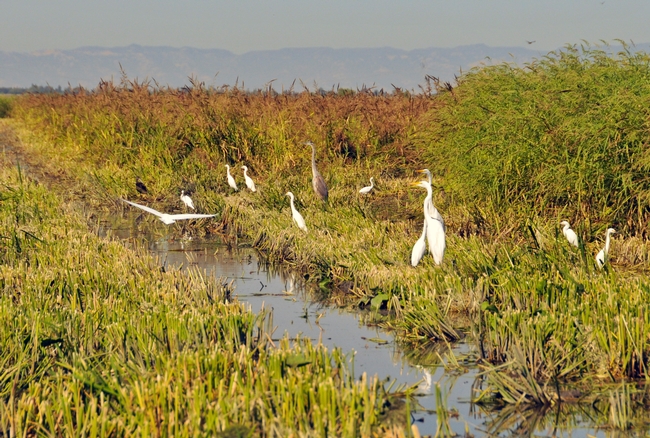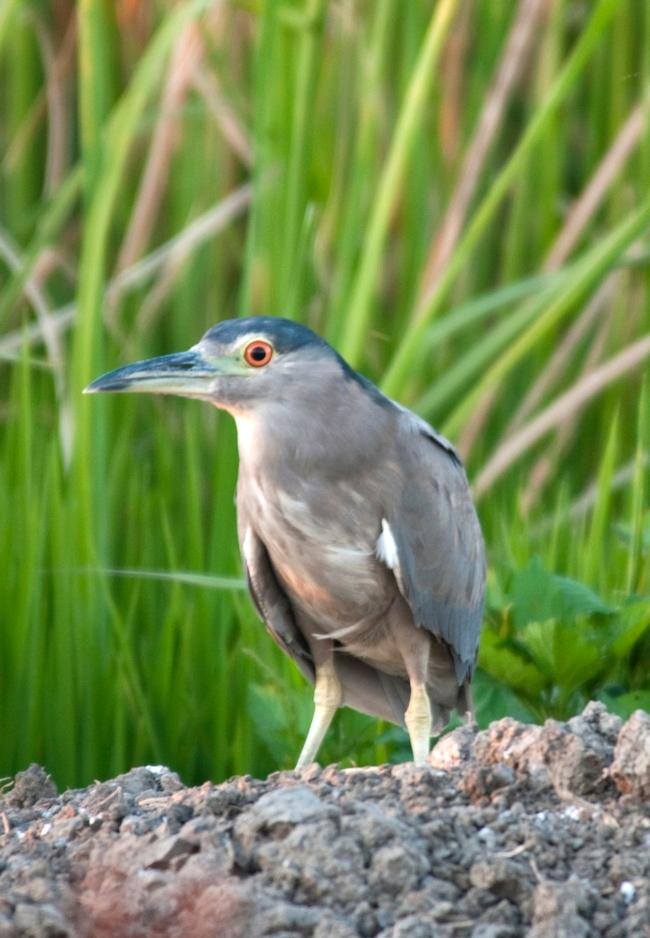
From late fall through winter you can see thousands of ducks, geese and other waterfowl winging over the bypass’s flooded rice fields and the restored wetlands in the Vic Fazio Yolo Basin Wildlife Area. 
A recent article in The Sacramento Bee featured a research project at a rice farming area in the upper reaches of the bypass that is examining how flooded fields could be used to fatten up young salmon during a crucial time in their life cycle. One part of the study is examining how soil type influences the production of insects — an important source of food for growing salmon. Carson Jeffres, a fish ecologist with the UC Davis Center for Watershed Sciences, is quoted in the story: "There are hundreds, if not thousands, of insects that are coming out of each 9-by-6-inch block of earth." You can also watch a YouTube video to hear UC Davis doctoral student Jacob Katz describe the project and read more about why fish find this floodplain so attractive in a previous Green Blog post by writer and photographer Trina Wood.
Part of the wildlife area is accessible by automobile — when it’s not flooded! Consider taking a tour of this remarkable and easily accessible area, or take binoculars to view the many birds. UC Davis fisheries professor Peter Moyle prepared a guide that will help you make the most of your visit.